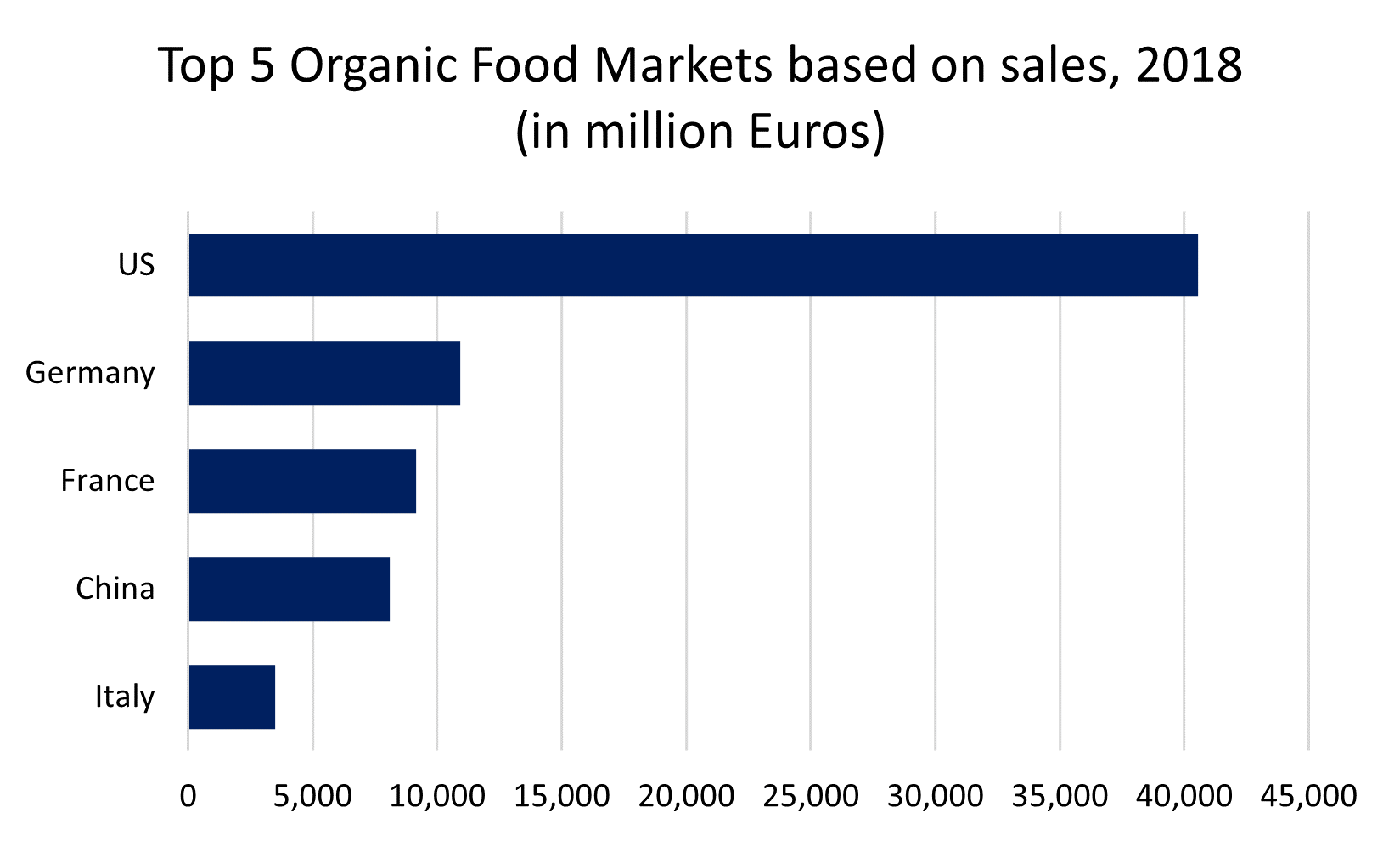US Organic Meat Market: Consumption Trend and Production Challenges
With Coronavirus posing lethal health issues around the world, consumers have become more conscious of the origin, production processes, and nutritional value of the foods they consume. Akin to this rising consciousness, “Organic” has become an in-demand selling point. Increasing consumption appetite for organic foods is driven by consumers' tendency to avoid Genetically Modified Organisms (GMOs) and pesticides and to prefer higher nutritional value foods. The sales of organic food have been showing a remarkable surge around the world, rising from USD 18 billion in 2000 to USD 95 billion in 2018. The US constituted the highest share in total sales, amounting to almost USD 50 billion in 2018 followed by Germany, however, with only around one-fourth of US sales.

US: Organic Meat Market
Demand
The US is the uncontested champion in organic food sales based on 2018 data. Among different types of organic products, organic meat was consumed the most. In 2011, organic meat was the third most consumed organic food, with just a minimum gap from the fourth rank, and in 9 years, it surpassed organic yogurt sales, the former most sold organic food, by a substantial amount. More than 35 million Americans consumed organic meat or poultry in 2020 which is about 11% of the total US population, reflecting its big presence in the US market. The increase in demand and consumption is found to be more prominent in the younger generation. This positive growth is expected to continue on with an estimated Compound Annual Growth Rate (CAGR) of 4.7% during 2020/21.

Supply
In contrast to striking demand, the US only ranked 7th in terms of organic agricultural land area with around 2.02 million hectares as of 2018. Australia stands as the invincible first place with more than 1700 times larger area than the US. In terms of the number of certified livestock and poultry organic farms, there were around 4,271 certified US farms in 2019. In order to attain the “organic” stamp on their products, there are a number of regulations and standards set by the United States Department of Agriculture (USDA) that have to be met. Some of these main standards are regarding their nurturing environment, type of feeds, and presence of any hormonal substance. Specifically, in the case of the type of feeds, 100% certified organic feeds have to be used.
Challenges and Outlook
This is where supply and demand mismatch is found wherein domestic organic grain production isn't able to match the organic meat producers’ demand for organic feed. Despite corn being one of the widely harvested crops in the US, organic corn isn't produced as much, as reported by Bloomberg. Organic corn production has substantially grown over the years. This poses a problem for the growing organic meat producers as they are left with no choice but to source from overseas markets to feed their livestock.
It is without a doubt that organic corn production has gone through significant expansion in recent years. Based on the latest data, US harvest acreage for organic corn has increased from 166,841 in 2015 to 213,934 in 2016, which is a 26% increase. Most of the harvests were channeled as organic feeds while some were allocated for food products. However, the speed and magnitude of growth in organic meat production have been stronger, leaving the perennial shortage of domestic organic feeds unsolved. Around 20% of organic corn used as feed in the US is imported, mostly sourced from Argentina. The dependency has caused a number of concerns with regards to quality and price. In 2019, the US Department of Agriculture accused an Argentine company of using prohibited herbicides and fertilizers on corn that were sold as organic to the US. Moreover, prices of organic corn have been climbing up to USD 8/bushel, which is expected to further experience upward pressure from decreased production in Argentina and more favorable conditions for Argentine suppliers to sell in the domestic market due to the rise in conventional prices. The higher organic feed prices would subsequently place upward pressure on organic meat prices as well. While the US continues to depend on imported organic corn, its organic meat industry would have to endure feed quality and price issues.
Sources:
- Ag MRC. Organic Corn Profile
- USDA. Organic 101: What the USDA Organic Label Means
- CISION.The Top 3 Reasons Shoppers Buy Organic Produce
- The Business Research Company. Organic Meat Products Global Market Report 2021: COVID 19 Growth And Change To 2030
- Lancaster Farming. Organic Corn Prices Expected to Rise.
- Organic Trade Association. U.S. organic grains report
- The Jacobsen Fast markets. Organic Grain Price Forecast 2020; Organic Bean Prices Are Rising While Organic Corn Prices are Falling